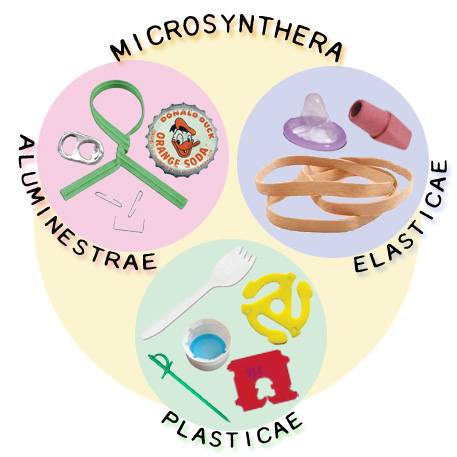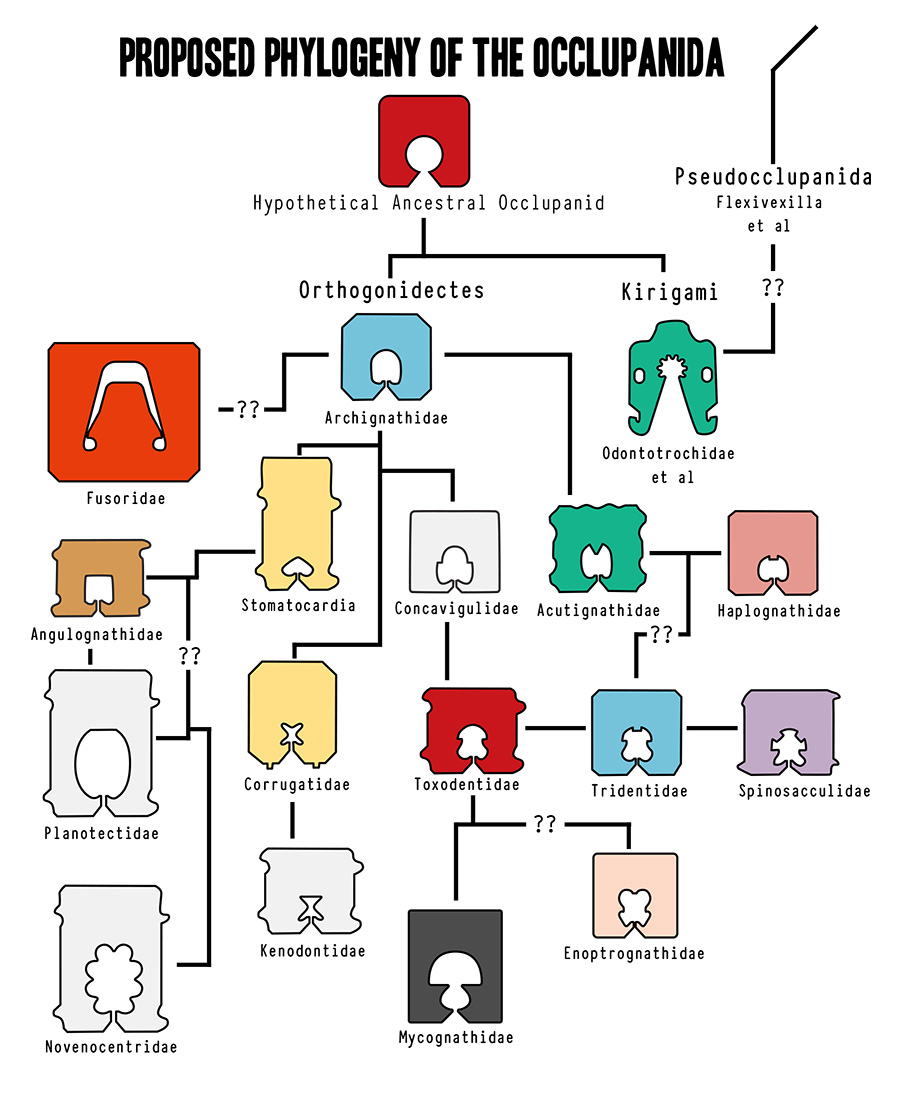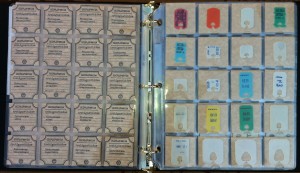Taxonomy
Class Occlupanida (Occlu=to close, pan= bread) are placed under the Kingdom Microsynthera, of the Phylum Plasticae. Occlupanids share phylum Plasticae with “45” record holders, plastic juice caps, and other often ignored small plastic objects.
Methodology
In constructing a taxonomy, many factors such as genetics, derived traits, growth and development, sexual dimorphism, reproduction, and a fossil record are taken into account. For a synthetic taxonomy, all of these critical keystones of information are entirely absent. The synthetic taxonomist is forced to construct a lineage much like Carl Linnaeus winged it in the 1700’s: group things that look similar, draw lots of complex-looking charts, and hope your future descendents work out occlupanid genetics somehow.
Since most occlupanids sport a confounding jumble of homologous structures, occlupanologists focused on the oral groove to establish taxa. Much like insect wings, occlupanids are grouped according to the dentition (or lack thereof) in their oral groove, which often dictates both their ecological niche and biogeographic location.
A proposed phylogeny starts with the reasonable assumption that the most basal occlupanids resembled something like the Archignatha, with subsequent orders placed according to their dentition arrangement. In time as more and greater niches arose in the civilized world, greater speciation has occurred, resulting in new orders arising and spreading out as older ones wane.


